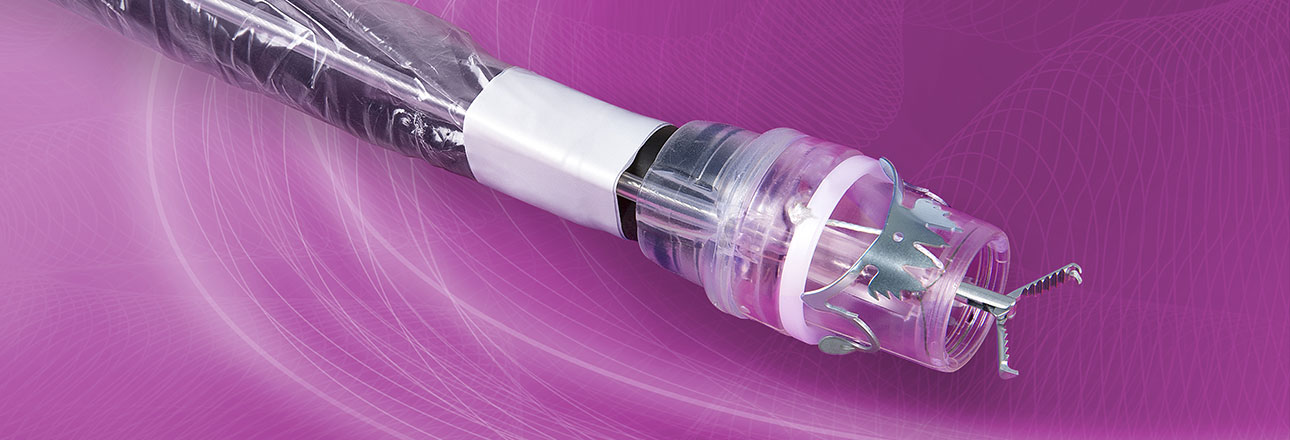A. Braun and H. Dawson, Gastroenterology and Endoscopy, SRO Langenthal, Switzerland and Institute of Pathology, University of Bern, Switzerland, presented their study on amyloidosis diagnosis with the FTRD System at the 48th DGE-BV Conference (DGE-BV: German Society for Endoscopy and Imaging Procedures) in March 2018. This is the first description of FTRD use in this indication.
Amyloidosis is a heterogeneous group of diseases with accumulation of abnormal protein, known as amyloid fibrils, which build up in interstitial tissue, leading to manifold clinical problems. The GI tract is also affected. Diagnosis must be confirmed by biopsy and histological examination and samples must contain submucosal vessels and muscularis propria. There is currently no realiable minimally invasive sampling technique. The study investigated feasibility, performance and safety of endoscopic full-thickness resection with the FTRD System in the rectum for gastrointestinal amyloidosis diagnosis.
Between 2015 and 2017, full-thickness excision of rectal wall with the FTRD System was performed in 12 patients (5 female, median age 73years (29-81)) with suspected amyloidosis. Sigmoidoscopy was performed under light sedation in all patients. Biopsies were taken from the upper third of the rectum 14 – 18 cm ab ano.FTRD application and full-thickness resection were successful in all cases. Maximal procedure time was 20 minutes. No adverse events occurred and the clinical course was uneventful in all cases. Clear diagnosis was possible in all histological examinations. In 7 of the 12 patients (m=5, f=2) amyloid fibril accumulation was found in small submucosal vessels and in the muscularis propria layer, confirming the diagnosis of amyloidosis.
The authors conclude that FTRD application for diagnosis of gastrointestinal amyloidosis is a safe and very effective method and mitigates the diagnostic challenges that amyloidosis can pose.
Amyloidose-Diagnostik durch FTRD (Full-Thickness Resection Device)
Braun A and Dawson H (2018)
see poster


 English
English  Français
Français 